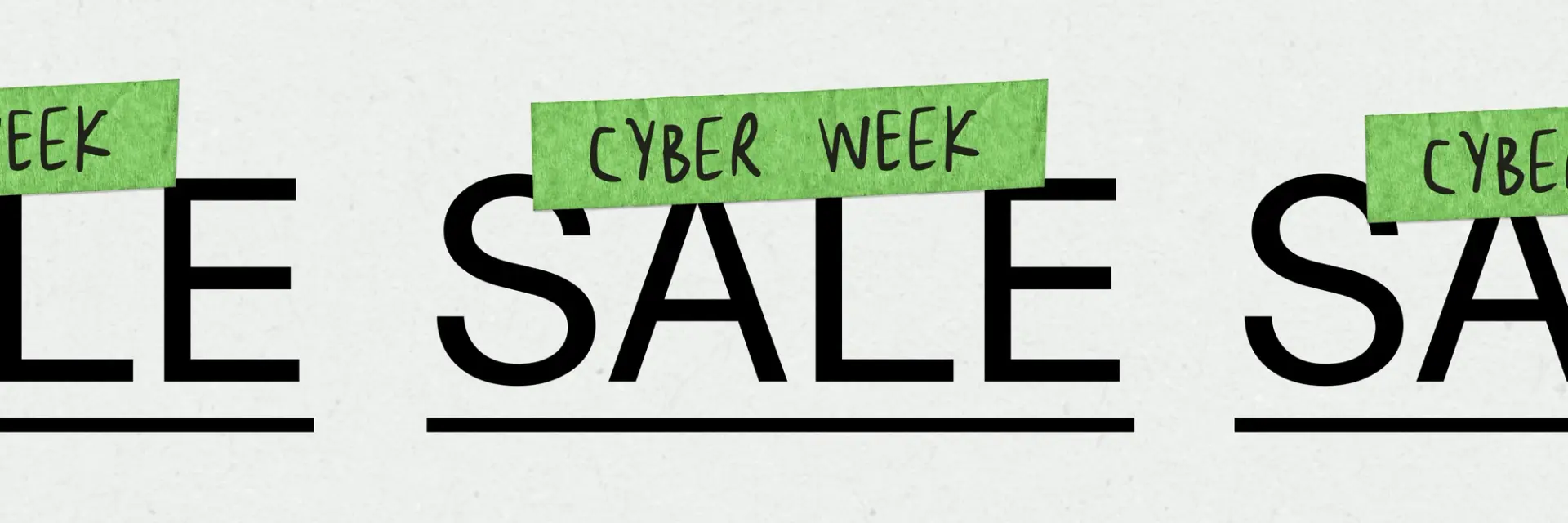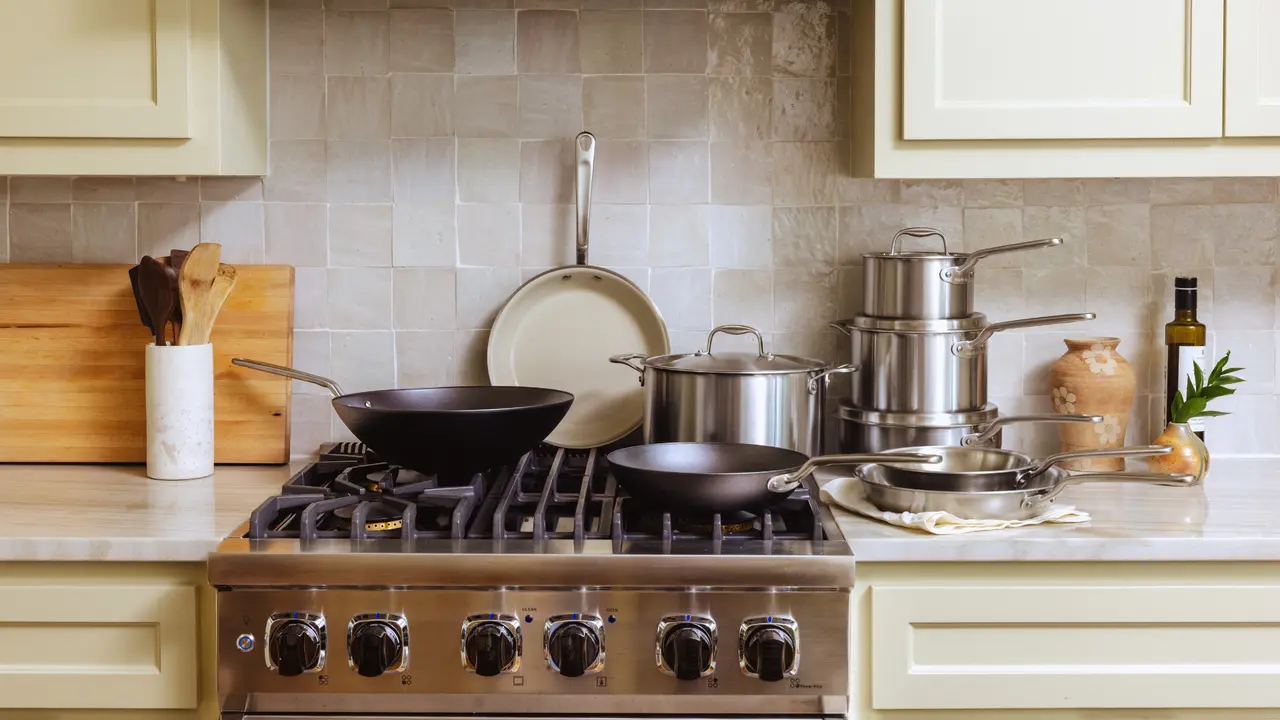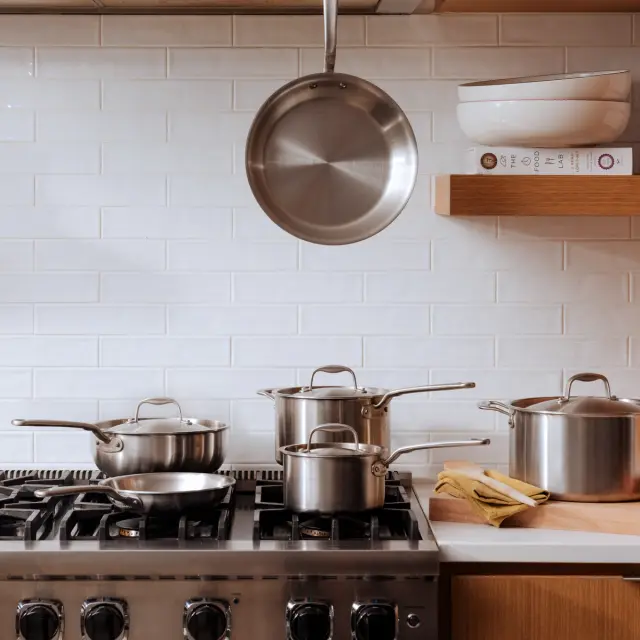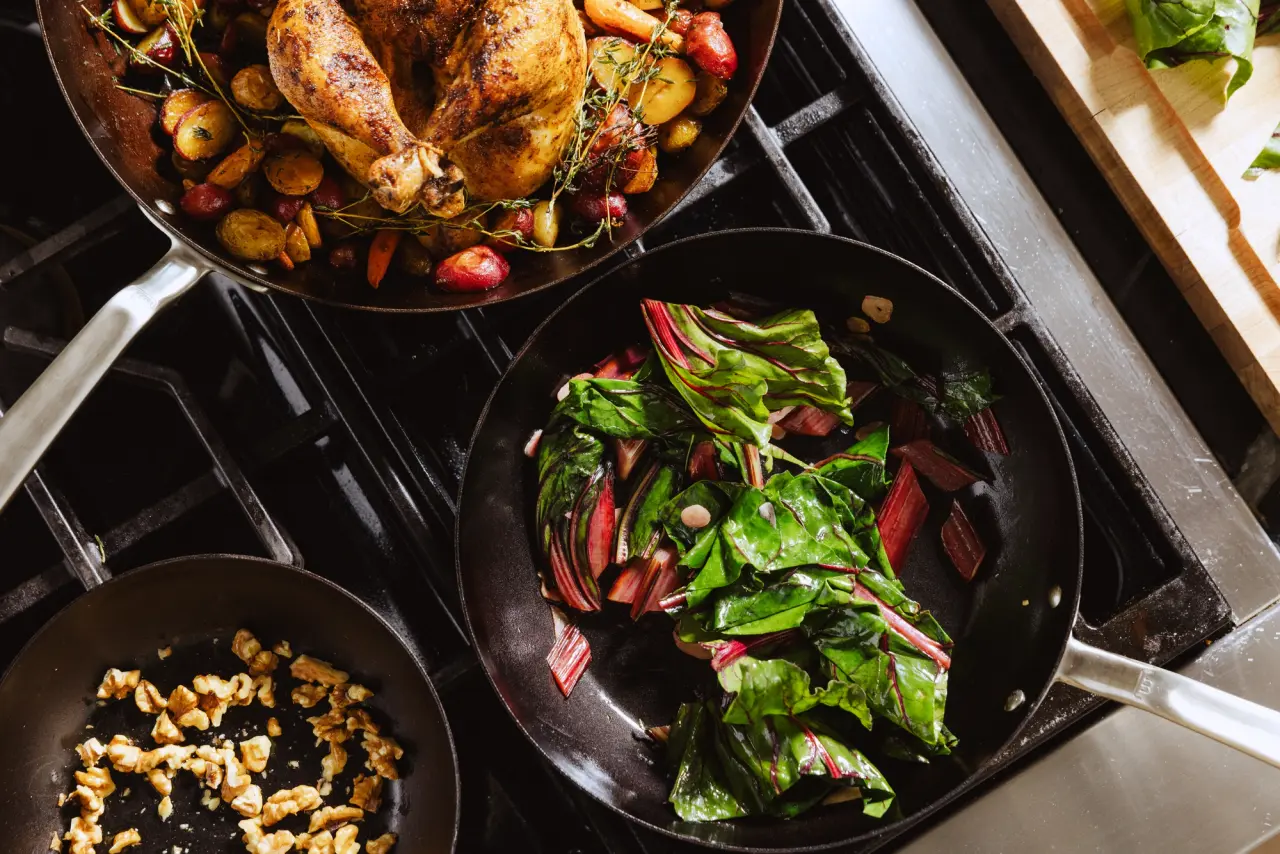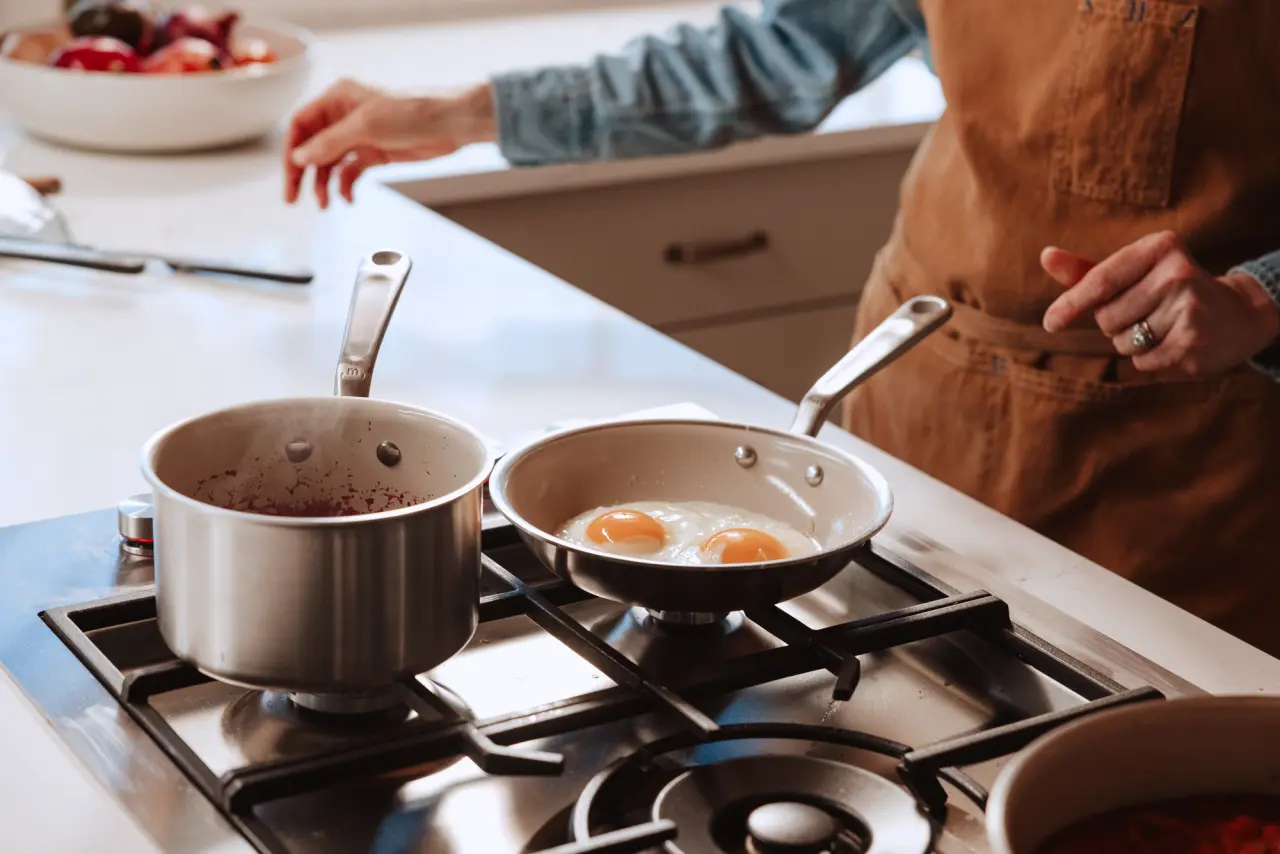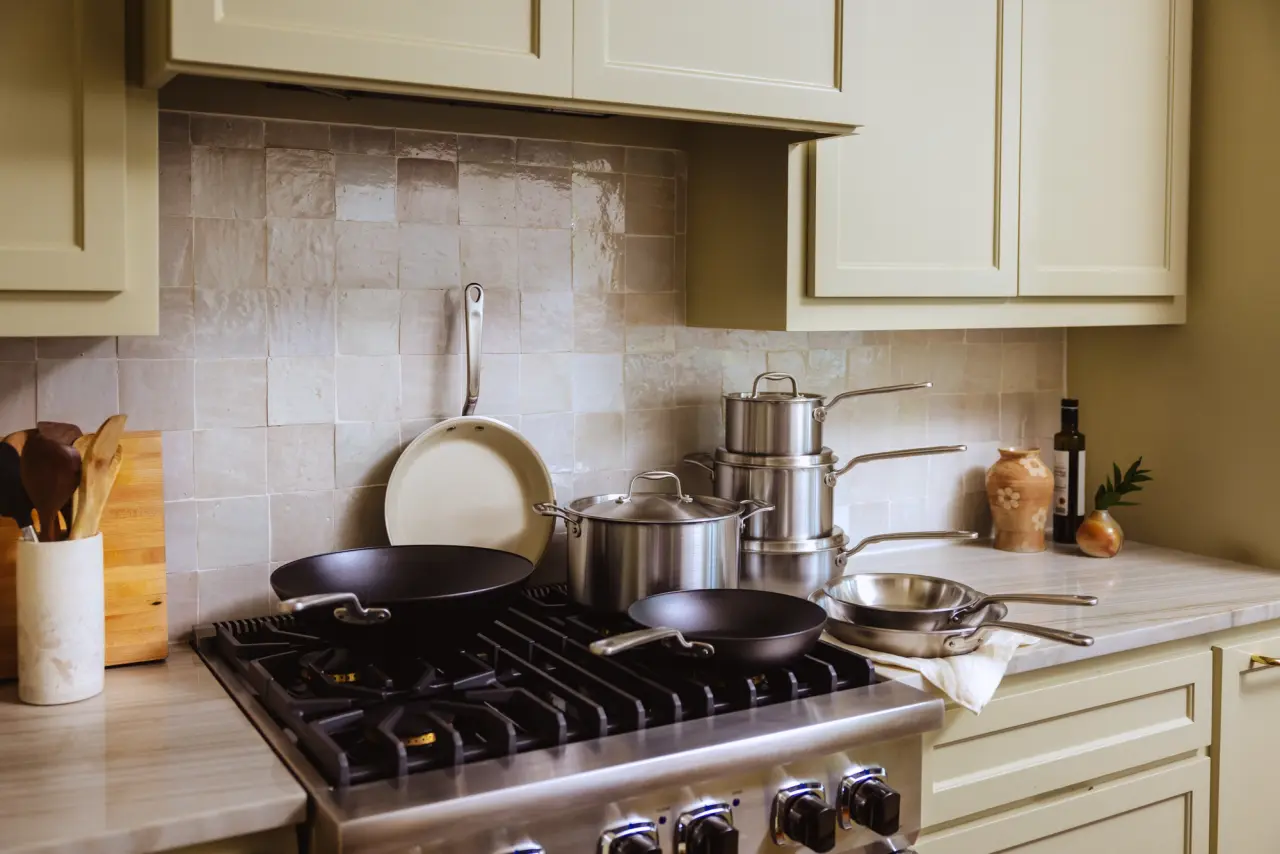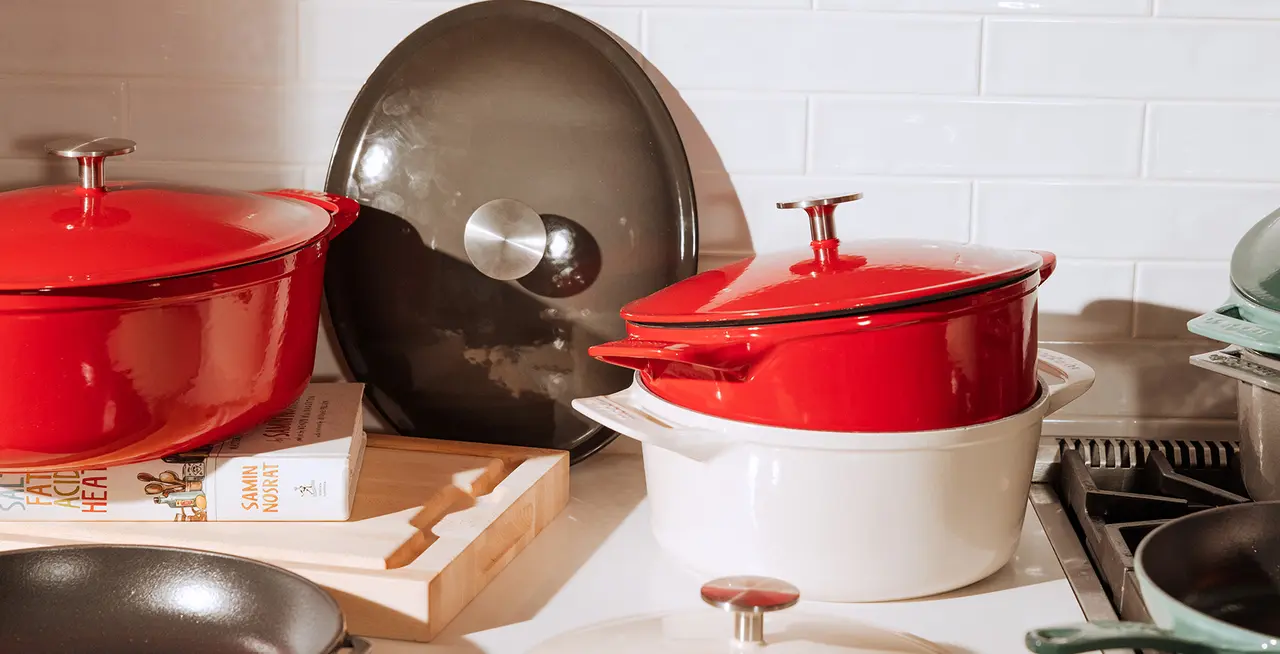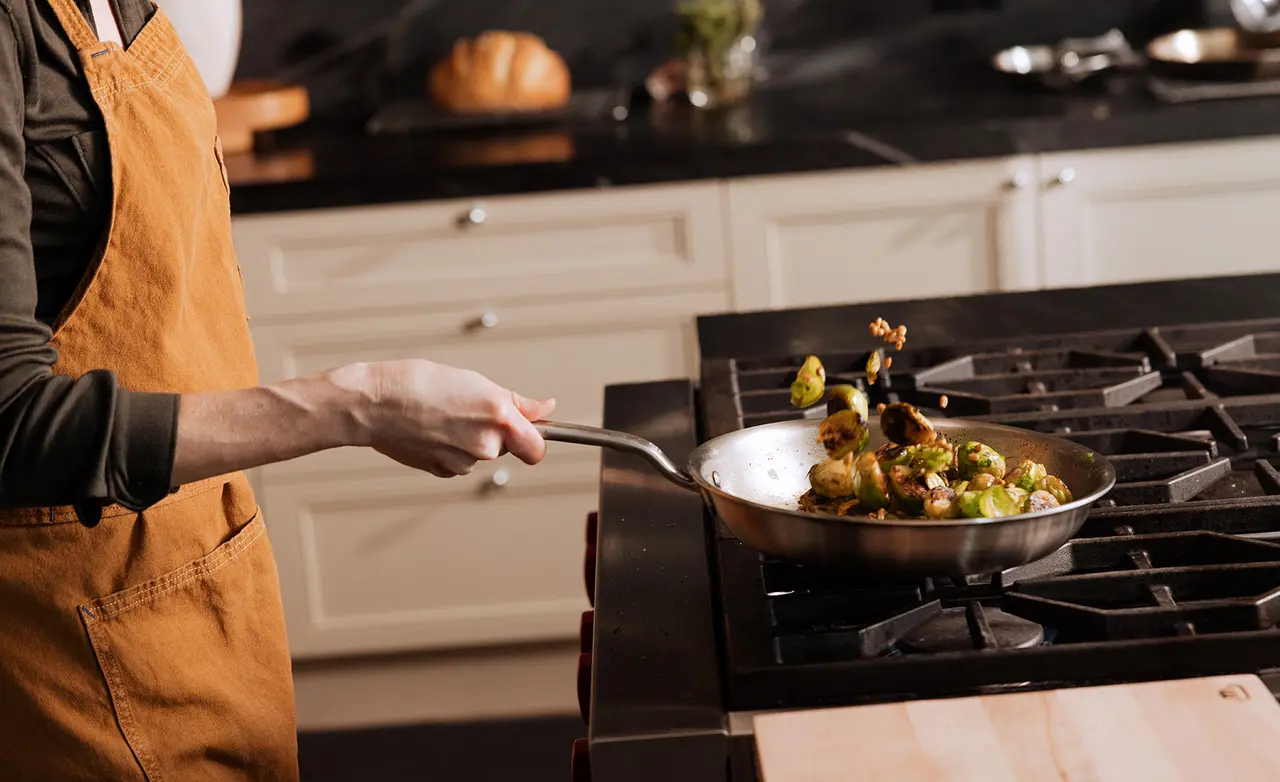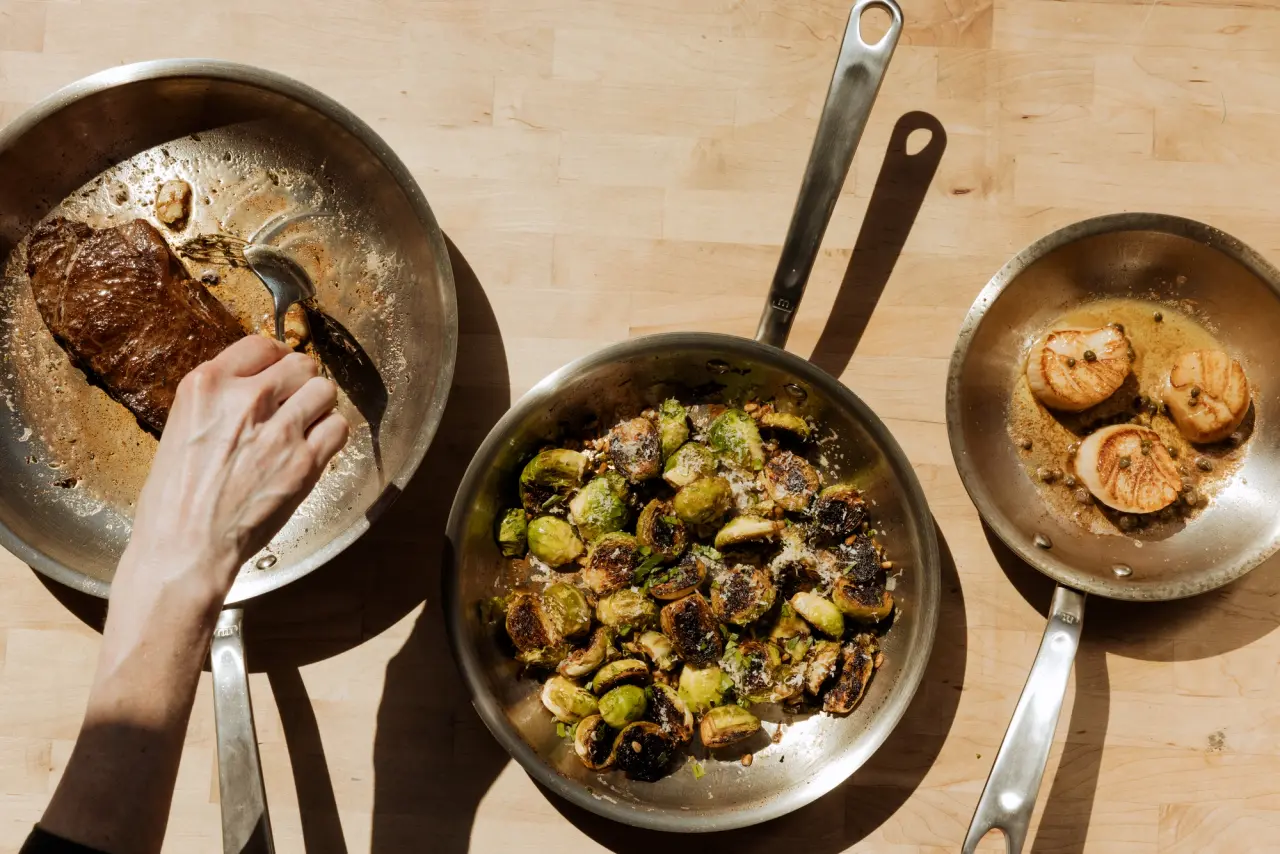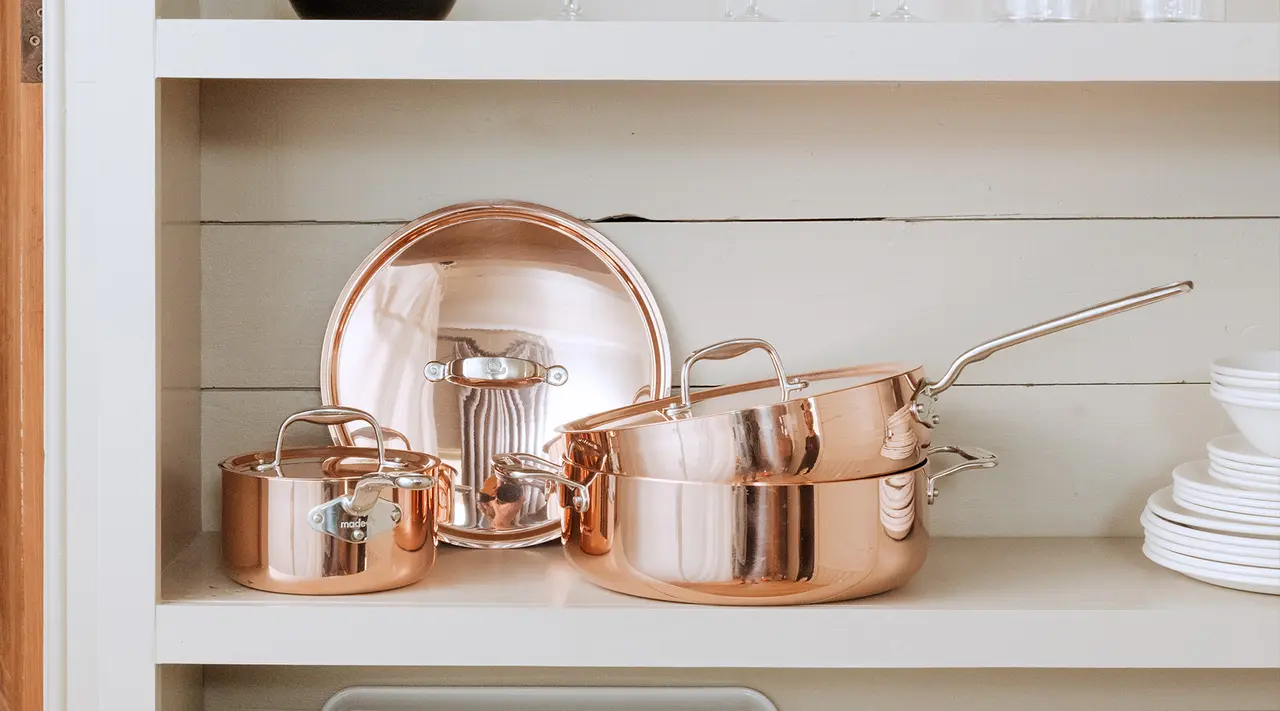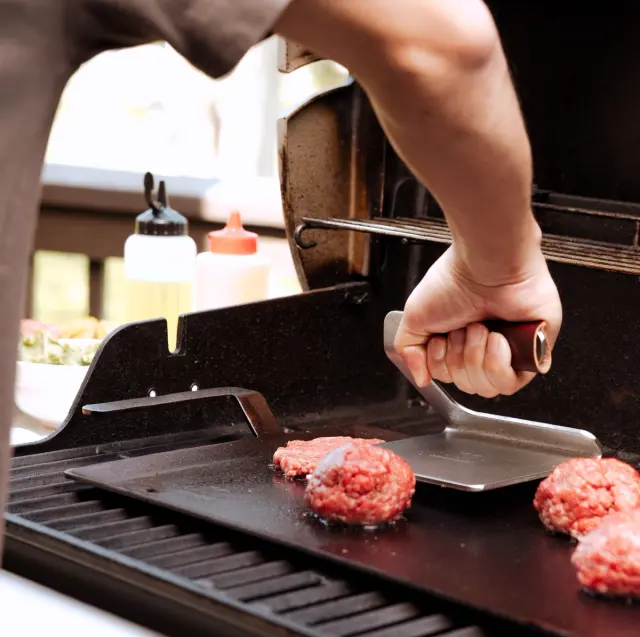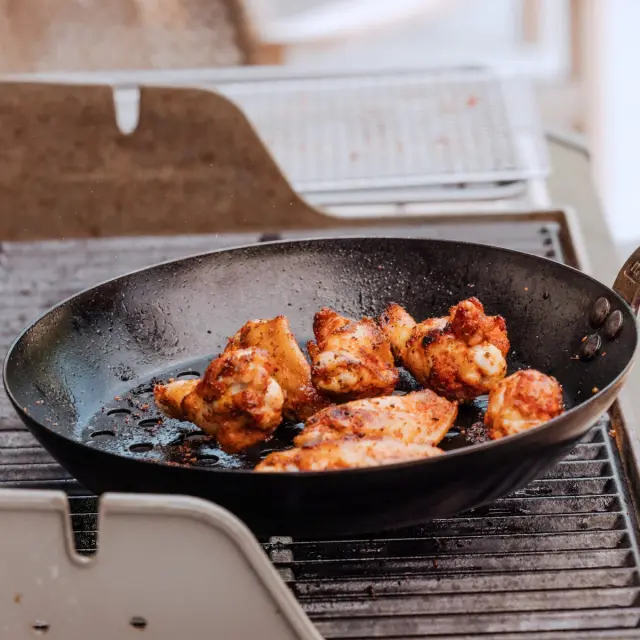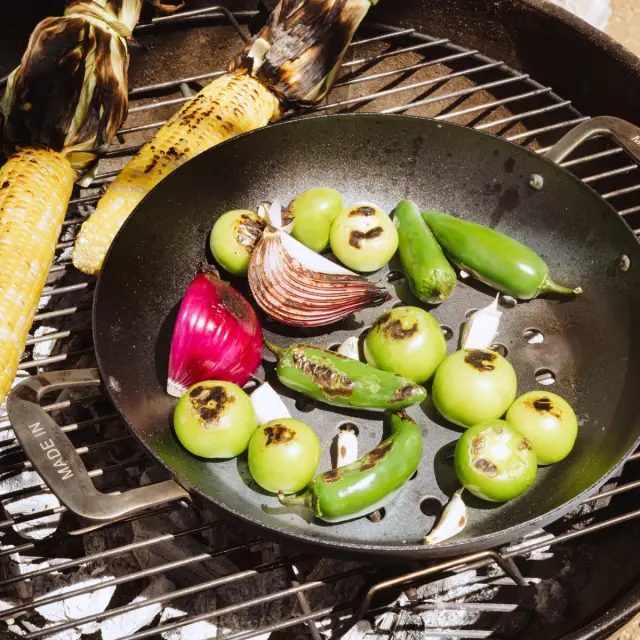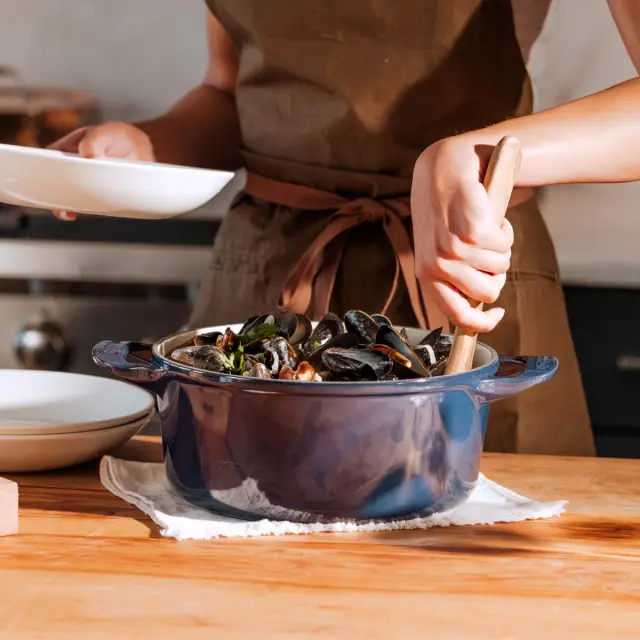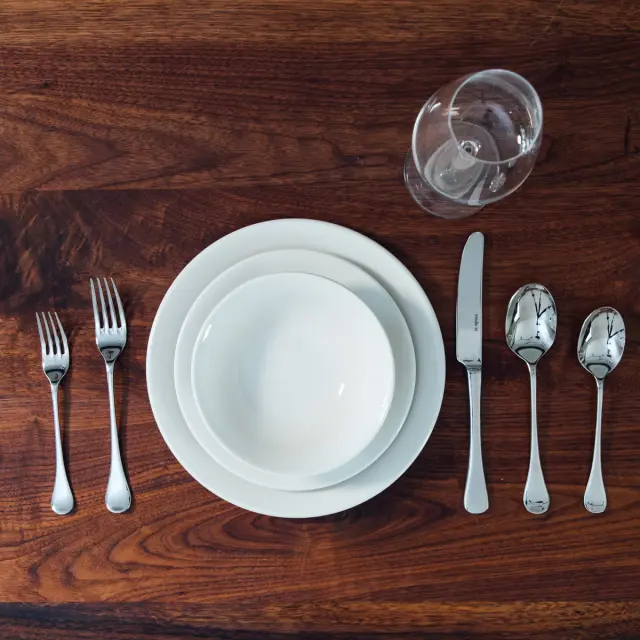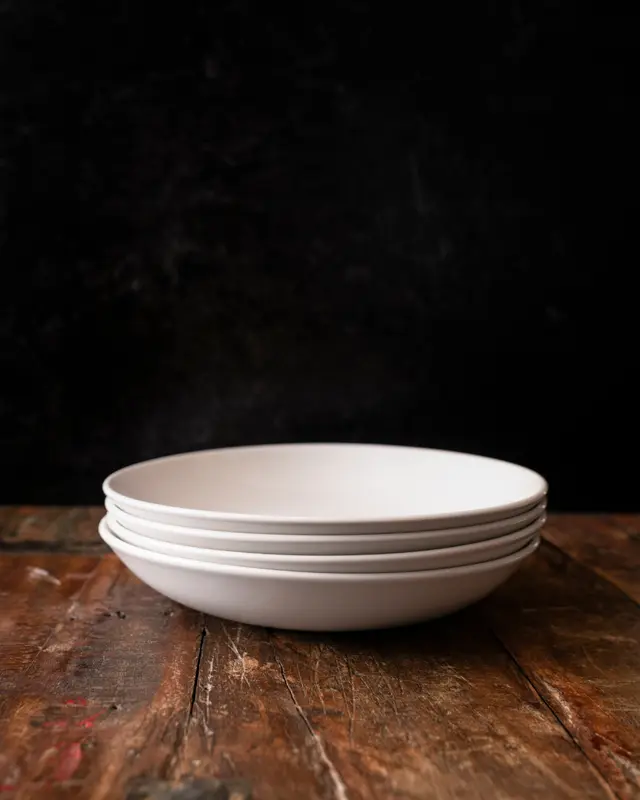If you’ve tried to shop for “clean” or “healthy” cookware in recent years, you know that it’s become much harder than it needs to be. PFAS-free; PFOA-free; PTFE-free; non-toxic; natural—there’s an entire lexicon of terms to sift through, turning what *should* be a fairly straightforward process into a labyrinthine time suck. Our solution? Give our customers the safest, highest-quality cookware possible, with clear, science-backed explanations to help guide them in their decision-making process. No empty claims, no vaguely scientific-sounding jargon, no confusing buzzwords—just the bare facts.
What Makes Cookware “Healthy”?
If your first thought upon reading this article’s headline was that we’d be talking about the dangers of Teflon (i.e. traditional non stick), you’re not entirely wrong; traditional non stick cookware has come under fire as of late for its historical association with BPA, PFOA and other harmful PFAS chemicals. With that said, we tend to take a more expansive view of healthy cookware, touching on four basic criteria: heat stability; material purity; durability; and continued health and safety testing in accordance with current scientific research.
Since we also think that healthy cookware should make it easier to cook with less oil, we’ve included several non stick options—including ceramic and enameled cast iron—in our list. We also want to note that, in addition to BPA and PFAS, it’s best to stay away from any cookware containing titanium dioxide. A potential carcinogen, titanium dioxide has been found in ceramic non stick pans from a number of popular brands.
CeramiClad™ on Stainless Clad — Clean Non Stick Without Compromise
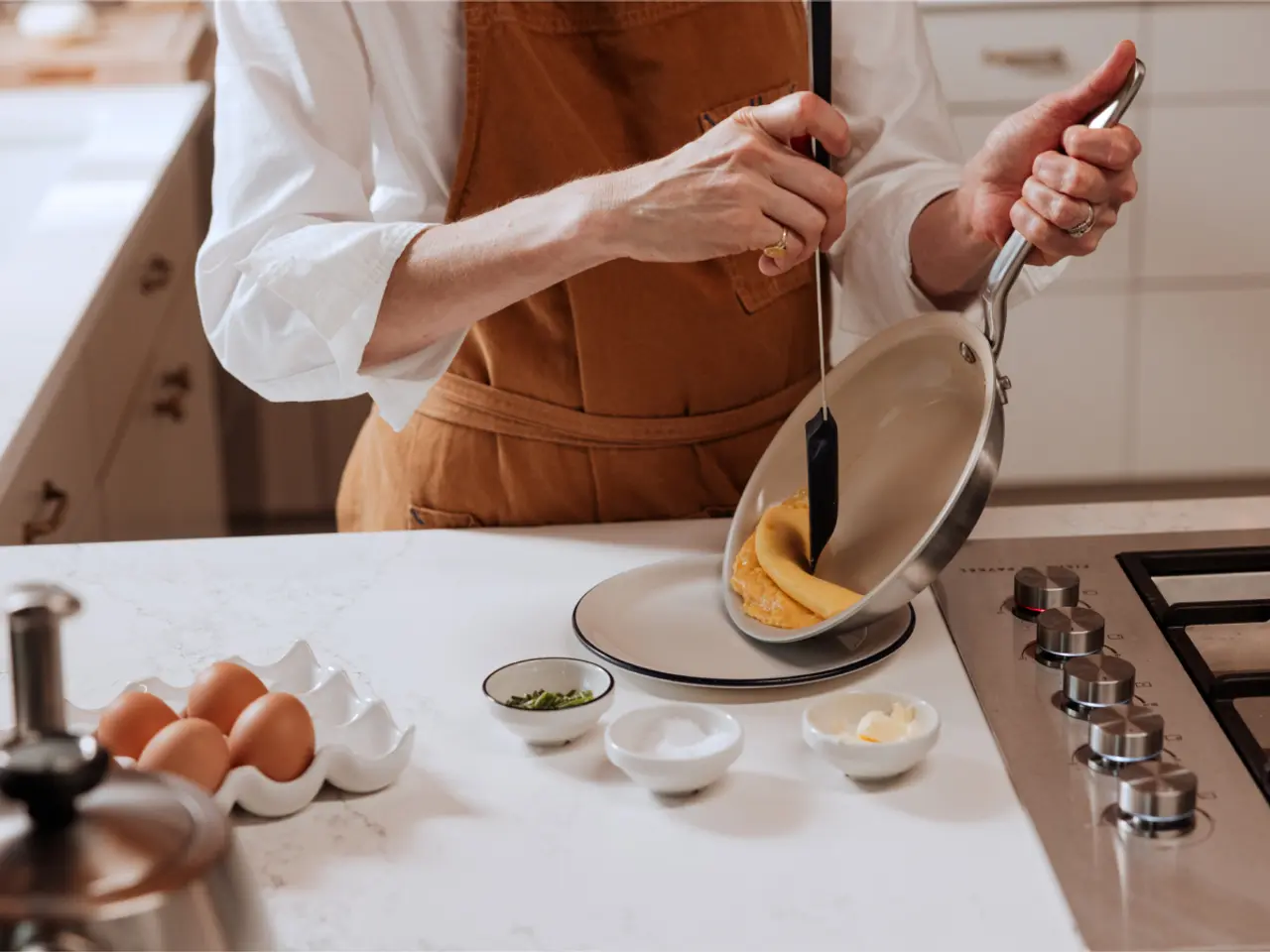
Made In Cookware’s CeramiClad™ offers a much more durable, heat-responsive alternative to your typical non stick-coated cookware. Made by coating our premium 5-ply stainless clad with two layers of our proprietary ceramic coating, CeramiClad™ is free of synthetic coatings, as well as PFAS and BPA. These pans are also oven-safe up to 550F, meaning that you can use them to sear, bake, or pan-fry without worrying about offgassing or flaking (both of which are common concerns with traditional non stick).
Despite the differences between Made In Cookware CeramiClad™ and traditional non stick cookware, CeramiClad™ is just as suited to cooking sticky foods like eggs, fish, and cheese. Also like traditional non stick, CeramiClad™ is designed for quick, easy hand-washing; the most you’ll need as far as cleaning tools are a non-abrasive sponge and baking soda or vinegar (for tough, stubborn messes). However, nine times out of ten, you’ll be able to get away with a quick rinse using warm water and dish soap.
Pros:
- Durable, flake-free ceramic coating made without PFAS, PFOA, PTFE, lead, cadmium, or BPA.
- High-performance stainless clad base for even heating
- Smooth, naturally non stick surface for cooking eggs, fish, and more
Cons:
- Requires wood or silicone utensils to avoid scratching the ceramic coating
- Won’t last as long as stainless steel, cast iron, or other cookware materials
- Hand wash only
Carbon Steel — High-Heat, Naturally Seasoned
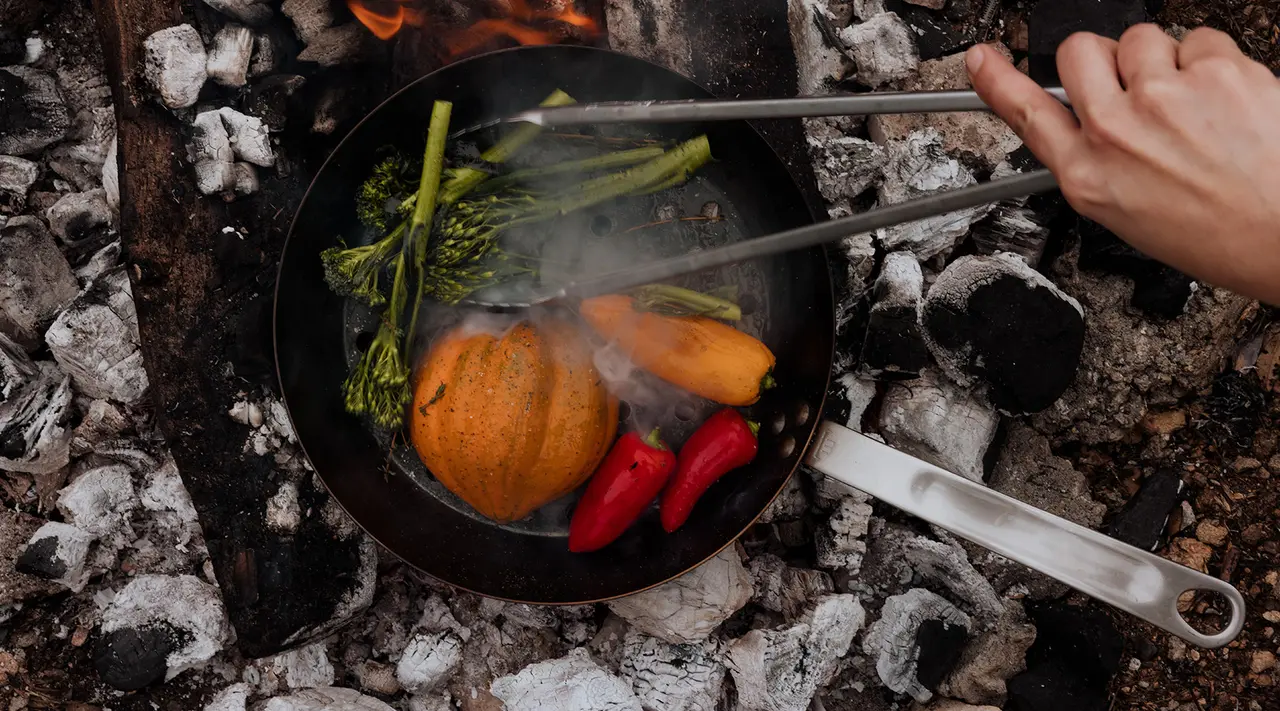
With its durable, naturally non stick patina and virtually unrivaled searing ability, carbon steel is our answer to anyone wanting a robust, high heat-tolerant pan that’s also great for healthy cooking. Starting with a substrate of pure carbon steel (an alloy, or mixture, of carbon and iron), Made In’s Carbon Steel Cookware becomes naturally non stick once it’s been seasoned with a high-smoke-point cooking fat, such as vegetable or grapeseed oil (no plastics or synthetic coatings required).
Because of this natural coating, carbon steel can also get fiendishly hot—up to 1200F—without warping, degrading, or suffering virtually any other side effects. And even if you do manage to scratch or otherwise damage your pan’s coating, it’s easy to fix: simply reseason it, repeating the process until your pan is as smooth and non stick as before.
Pros:
- Naturally non stick coating is easy to restore; becomes more non stick over time
- Extremely high heat-tolerant; won’t warp or break down
- Heats quickly and evenly, with superior searing capacity
- Safe for use on all cooktops
Cons:
- Unseasoned carbon steel needs to be seasoned before use, as well as occasionally reseasoned in order to prevent rust spots
- Slightly less non stick than ceramic or traditional non stick options out of the box
- Acidic ingredients like tomatoes and citrus can strip the seasoning
- Hand wash only
Enameled Cast Iron — Pure Core, Zero Seasoning
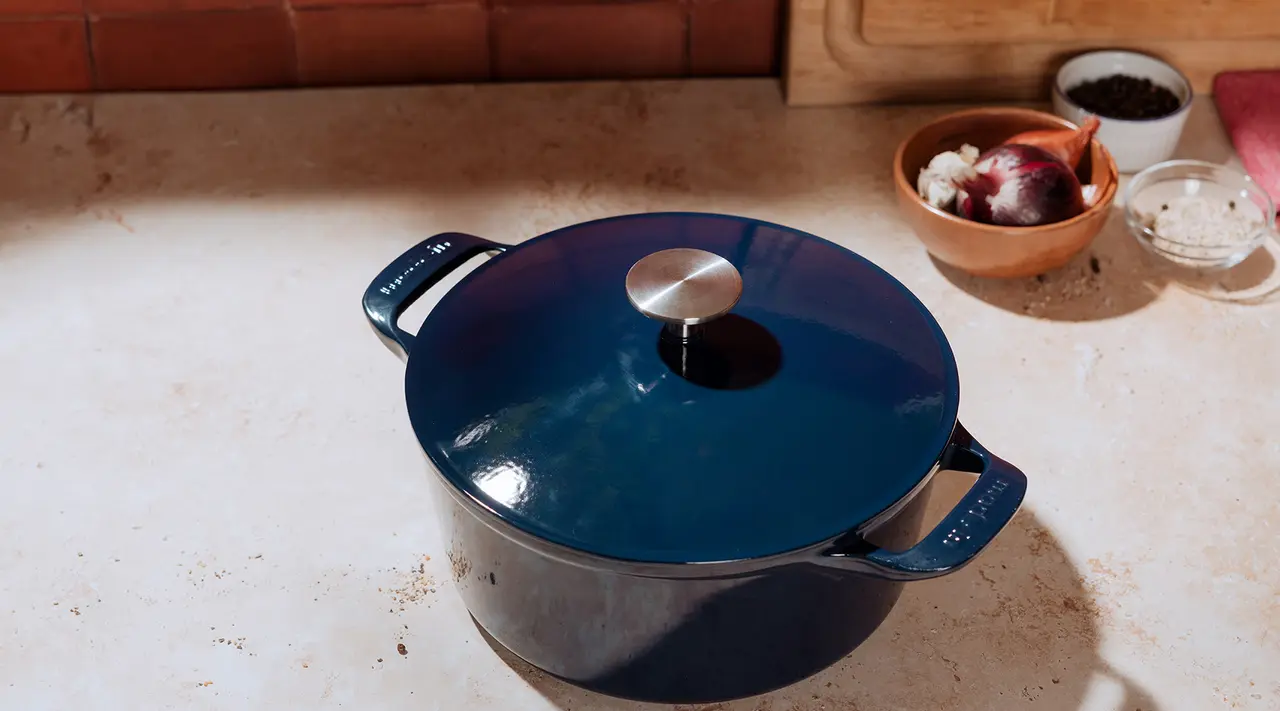
Made In’s Enameled Cast Iron Cookware consists of a rugged cast iron core—the same material used to make your favorite heirloom skillet—that’s been sprayed with a layer of powdered glass to form a slick, naturally stick-resistant surface and exterior. Because the coating is non-reactive—meaning, it won’t rust or leach metallic flavors or toxins into your food—we consider it to be an great option for healthy cooking. It’s also ideal for cast iron lovers who want to use their pan to make wine- or tomato-based pan sauces, but who don’t want to strip their hard-won seasoning or alter the taste of their food.
Pros:
- Extremely durable: built to last a lifetime
- Retains heat well; great for roasting, frying, and baking
- Colorful exterior and classic design make for an elegant oven-to-table serving piece
- Non-reactive cooking surface
- No seasoning required
Cons:
- Severely scratched or chipped enamel will expose the raw cast iron core to oxygen, which can lead to rust
- Use wood or silicone utensils to avoid scratching the enamel coating
- Heavier than the other options on this list
- Hand wash only
Stainless Clad — The Versatile Workhorse

Made In’s Stainless Clad Cookware is built for any task. Made from four different metals—professional-grade stainless steel, ferritic 430, aluminum, and aluminum alloy—layered together our 5-Ply Stainless Clad conducts heat quickly and evenly for a deep, even sear. With a non-reactive, scratch-resistant surface, it’s also built to last: even if you do manage to scratch it, it’s unlikely to alter your pan’s performance in any significant way.
Another useful thing to note about stainless steel is that you can also easily render your pan naturally non stick by sufficiently preheating it: simply place your pan over medium heat for a couple of minutes, then add oil and allow to preheat for a couple of minutes more. In addition to keeping your food from sticking, preheating also cuts down on the amount of oil necessary to properly stir-fry, sear, or roast your food, boosting your pan’s health profile even further.
Pros:
- Durable 5-ply construction is resistant to warping and scratching
- Circulates heat evenly for consistent cooking
- Rust- and corrosion-resistant
- Lightweight
- Non-reactive cooking surface
Considerations:
- More heat control required to render surface non stick
- Hand wash only
Build Your Clean-Cooking Kit
Everyday: CeramiClad™ + Stainless Clad
The ultimate duo for easy stir frying, sauteing, and reheating leftovers. CeramiClad™ and Stainless Clad both heat quickly and evenly, with easy cleanup.
High-Heat: Carbon Steel + Stainless Clad
Two of our favorite high heat-friendly pans. Opt for Stainless Steel when you want to sear protein and deglaze with wine or simmer meatballs in tomato sauce; go for carbon steel to sear heartier cuts of meat and poultry, or for throwing together a perfect stir fry.
One-Pot & Saucy: Enameled Cast Iron + Stainless Clad
Enameled Cast Iron and Stainless Clad are both high heat-tolerant, non-reactive, and super versatile. Cast iron’s heavy-duty construction and heat retention is perfect for baking, braising, and stewing, while stainless clad is our pick for whipping up quick, silky sauces.



